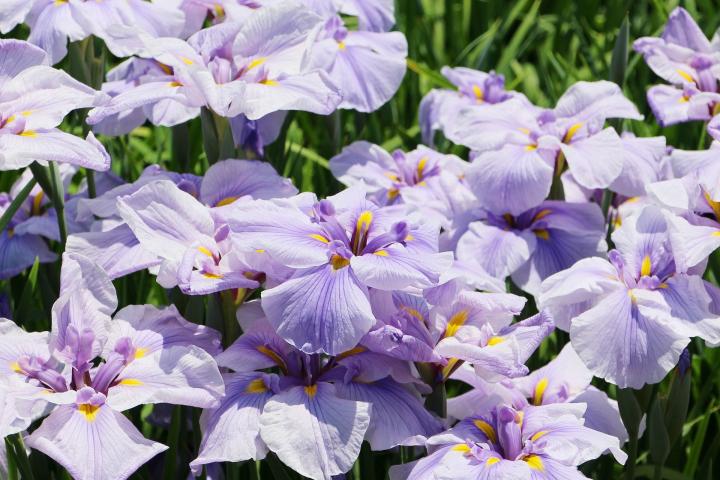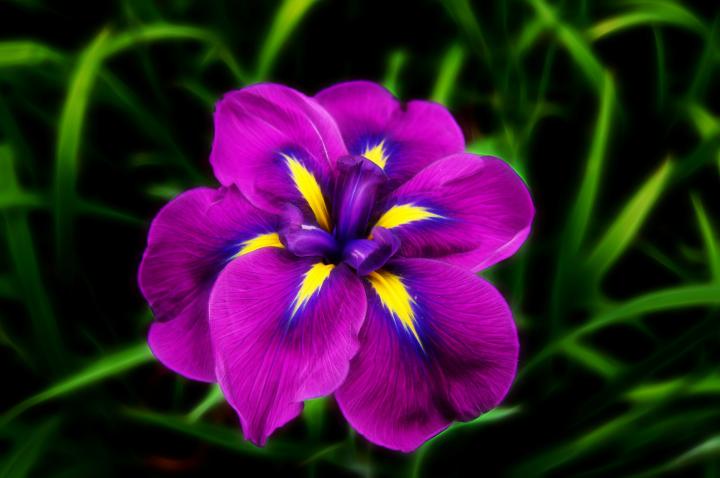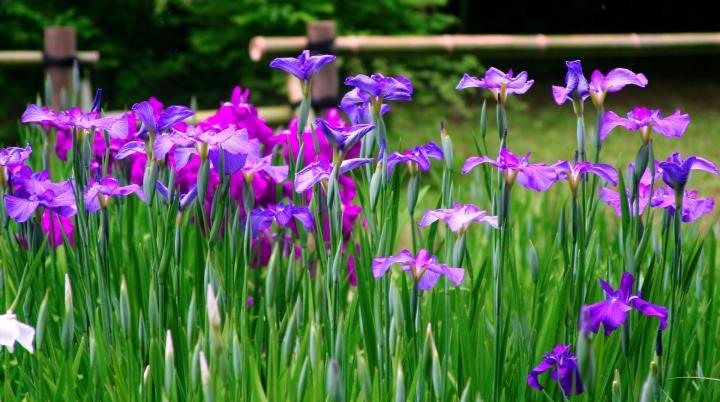If you love Siberian and bearded irises, you have to give their Japanese cousin a try. They bloom much later than the tall bearded irises, extending the iris season from mid-July into early August.
The blossoms of Japanese iris (Iris ensata) differ from those of bearded iris mainly because they do not have the tall, upright petals (called standards) in the center of the blossom. They have small standards and wide falls (the petals that hang down), giving the blossoms a flatter appearance. (It is easy to remember: standards stand up and falls fall down.)

The exotic flowers are enormous, reaching up to 8 inches across, and are held high above the leaves, looking like a colorful butterfly caught in mid-flight. Some gardeners consider them to be more graceful looking than bearded irises. The blossoms—which can be singles with 3 falls or doubles with 6 falls—come in a wide array of colors with marbled, dusted, edged, and speckled effects. The petals can have varying textures, often feeling waxy, ruffled, smooth, quilted, or velvety.

Instead of a fuzzy beard they have a pale yellow spot called a signal at the base of each fall to guide in the bees.
How to Grow Japanese Iris
Japanese iris need a moist site, rich in organic matter. Their ideal location is at water’s edge where the roots can spread into wet, acidic soil but they do not like their roots standing in water during winter. Japanese irises grow from a finger-shaped, fiber-covered rhizome which grows in a more upright position than the creeping bearded iris rhizome. Plant the rhizome with the roots spread out and the crown of the plant (where the leaves and rhizome meet) 2 to 3 inches deep. Water daily for a few weeks and then give them 2 inches of water a week until they are established. They can be divided after flowering but try not to let the rhizomes dry out.

Japanese iris are heavy feeders. Fertilize them with a balanced fertilizer in early spring and again right after blossoming. Don’t use any lime or wood ashes near them; it is fatal to these acid-loving plants. Most are hardy to zone 5 but a winter mulch of pine needles may help your plants survive an open winter.

Japanese iris are extremely adaptable. Though they prefer a moist location, rich in organic matter, they can be grown in a mixed flower border if given sufficient water, about 2 inches a week, and are mulched well. I grow mine in a moist bed where the runoff from the porch roof eventually flows. We can see them from the porch and they do look like exotic purple and white butterflies caught in mid-flight.
Also, see the Almanac’s plant guide to growing irises.
